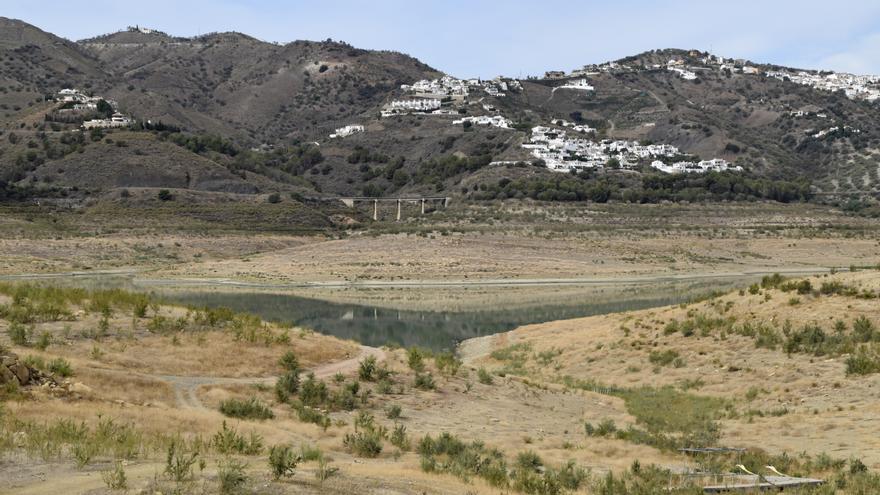
With no prospect of rain in the short term, in the warmest start to autumn in history, a annual precipitation deficit close to 11 percent and reservoirs in agonizing water levels, below 36 percent of capacitythe severe drought that Spain is suffering is worsening.
After the end of summer, the Iberian Peninsula is in Phase of drought long-term weatherconsidering the rains of the previous three years, in all the accumulation basins except the Júcar, Segura and Tajo.
According to data from the Meteorology Statal Agency (Aemet), in the Guadalquivir and Guadiana basins it is the longest drought since at least 1961, while in the eastern Pyrenees basin it is the most intense drought since the beginning of the series.
The initial cause of droughts is insufficiency of rains (meteorological drought), which results in water resources being insufficient to satisfy existing needs (hydrological drought), something common in the Iberian Peninsula, which has suffered from periods of acute scarcity, some of the worst being those in 1979/ 1983, 1991/1995, 2016/2017 and the current one.
As of today, the data shows that the reservoir water thresholds hold a total of 20,098 cubic hectometres, that is, they are at 35.9% of their capacity, with almost 4,000 hm3 less than the average of the last five years, and up to 7,000 hm3 below the average for the decade, according to data from the Ministry for the Ecological Transition.
By basins, the Guadalquivir (18.2%) and the Guadalate-Barbate (15.8%) are the ones that suffer the most serious situation, followed by the Segura (24.3%), Guadiana (23.8% ), Andalusian Mediterranean (23.4%) and those internal to Catalonia (22%).
Asturias, the community with the most water
Regarding the situation of the reservoirs by Autonomous Communities There are strong contrasts in the accumulations: Asturias is the community that has the highest percentage of dammed water (76.5%), followed by the Basque Country (59.9%), Galicia (59.2%) and the Community of Madrid (50.2%).
Behind them, and in an intermediate position, are Castile and León (44%), Valencian Community (42.4%), the Foral Community of Navarra (41.1%), Extremadura (39.4%), Catalonia (35.5%) and Aragon (32.4%); In the last positions are La Rioja (29.9%), Castilla-La Mancha (28.7%), Region of Murcia (28.3%), Cantabria (24.5%) and Andalusia (20.1% ).
It should be noted that the water stress of the reservoirs was already evident and worrying in 2022 when, in the same week, the water reserve reached 32 percent of its capacity, a percentage even lower than the current one and very far from the 66.6% registered in 2013, the best data in the last 15 years.
The shortage also affects rainfall, as reflected in the hydrological year, which runs from October 1 to September 30, and which, in the absence of official confirmation, has concluded as the sixth driest of the 21st century and the eleventh of the historical series (1961), with an average rainfall around 11-12 percent less than average.
The last hydrological year, 2021-2022, was the third driest in the historical series; Ahead is 2004-2005, the driest in the historical series, with an average of 415.1 liters per square meter, while 2011-2012, also very little rain, was the second driest, with 473.6 liters per meter square.
Regarding the possible rains for this week and part of the next, rising temperatures and a blocking situation are expected, with a powerful anticyclone on the surface and its ridge at altitude, which diverts the storms to the north, leaving the peninsula without precipitation. .
For now, until the middle of next week, heat will predominate due to a warm episode that not only will it not lose strength, but will intensify, especially in the north, east and south, with temperatures that will exceed 30 degrees in much of the country and up to 34-36 degrees in large areas of Extremadura and Andalusia.